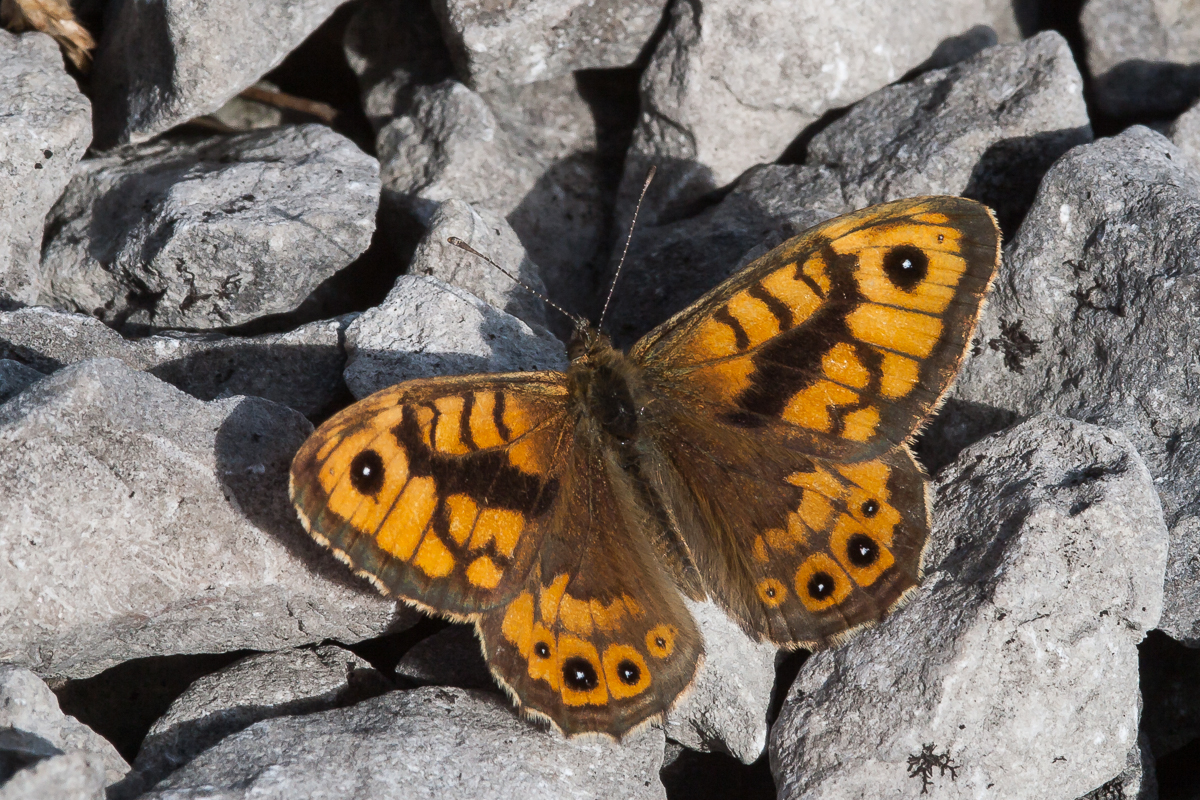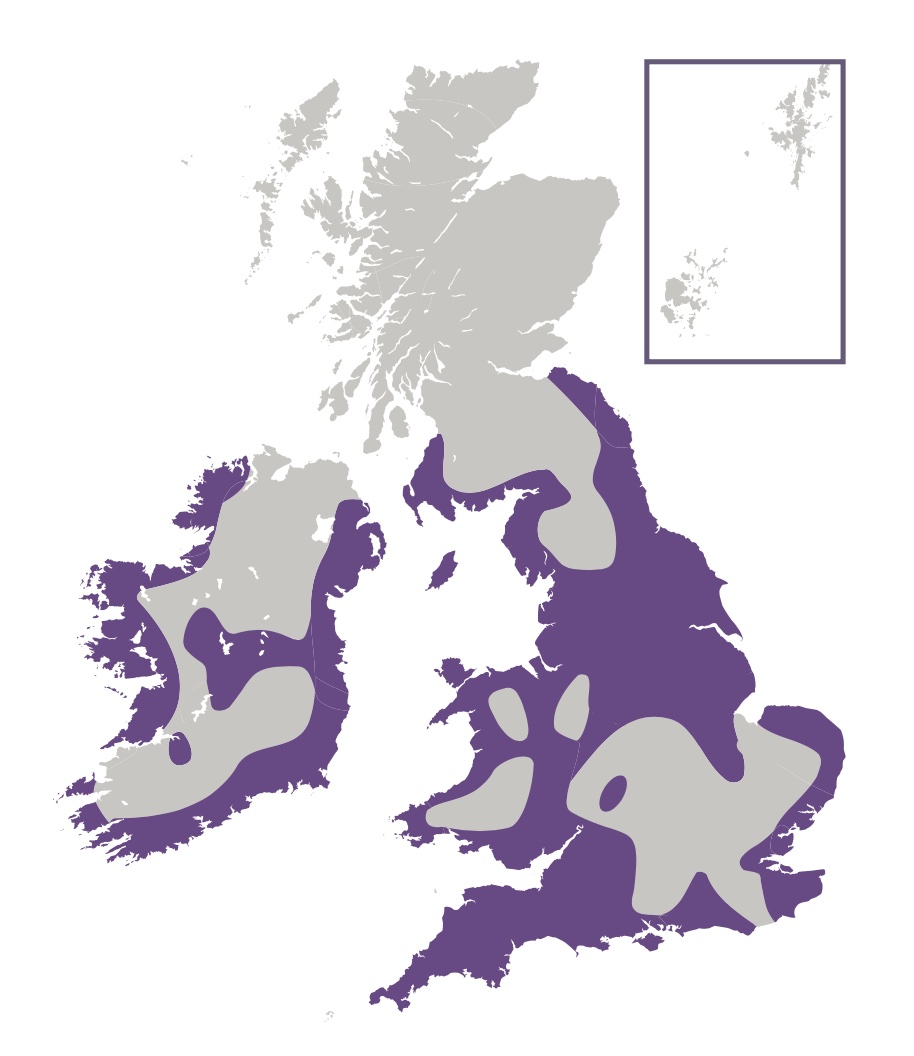
Photo © Peter Eeles
The Wall gets its name from the characteristic behaviour of resting with wings two-thirds open on any bare surface, including bare ground and, of course, walls! Many people will have come across this butterfly on footpaths, especially in coastal areas, where the butterfly flies up when disturbed, before setting again a few metres ahead.
The basking behaviour of this butterfly allows it to benefit from the full warmth of the sun whose rays shine directly on the butterfly, but also get reflected back onto the butterfly from whichever surface it is resting on. This habit allows the butterfly to raise its body temperature sufficiently high for it to fly. In particularly hot weather, however, such basking is avoided and the butterfly may even retreat to a suitably-shaded spot to avoid overheating.
This species was once found throughout England, Wales, Ireland and parts of Scotland. Today, however, is a very different picture, with this species suffering severe declines over the last several decades. It is now confined to primarily-coastal regions and has been lost from many sites in central, eastern and south-east England. In Scotland it is confined to coastal areas in the south-west of the country. It is also found on the Isle of Man and Channel Islands. This butterfly is found in relatively small colonies that are self-contained although some individuals will wander, allowing the species to quickly colonise suitable nearby sites.
The male of this species is territorial and will inhabit a particular area, such as a path, hedgerow or roadside verge, waiting for a passing female. Males will typically perch in a favoured position but will, in sunny and warm conditions, adopt a strategy of patrolling in order to find a mate. All passing insects are investigated and rival males will fly high into the air before coming back to the ground a few seconds later.
The female is much more sedentary and the less-conspicuous of the two sexes. After a brief courtship a pair will mate before disappearing into surrounding vegetation. Both sexes are avid nectar feeders and will feed from any available flower.

This species is now found primarily in coastal areas, especially unimproved grassland, wasteland, cliff edges and hedgerows.
Adults feed primarily on Common Fleabane (Pulicaria dysenterica), Daisy (Bellis perennis), hawkweeds (Hieracium spp.), knapweeds (Centaurea spp.), Ragged-Robin (Silene flos-cuculi), ragworts (Jacobaea spp.), thistles (Carduus spp. and Cirsium spp.), Water Mint (Mentha aquatica), Wild Marjoram (Origanum vulgare) and Yarrow (Achillea millefolium).
The primary larval foodplants are bents (Agrostis spp.), Cock's-foot (Dactylis glomerata), False Brome (Brachypodium sylvaticum), Tor-grass (Brachypodium rupestre), Wavy Hair-grass (Deschampsia flexuosa) and Yorkshire-fog (Holcus lanatus).
